Jan Chozen Bays's Blog
December 7, 2020
Mindful Eating, Diet Mentality, and Thin-Ideal Internalization
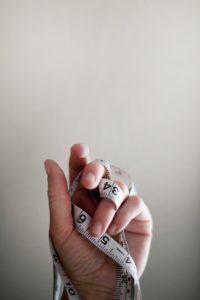 Recently, Jan’s webinar on the inner critic reminded me of an interesting and challenging process around the time I started teaching mindful eating courses. I was in my late twenties, super happy to have found a non-diet related approach to eating and to not only being able to research but to practically teach this promising approach. And then, out of the sudden, there was this thought: “Am I thin enough to teach mindful eating classes?”. It popped out of nowhere and really confused me.
Recently, Jan’s webinar on the inner critic reminded me of an interesting and challenging process around the time I started teaching mindful eating courses. I was in my late twenties, super happy to have found a non-diet related approach to eating and to not only being able to research but to practically teach this promising approach. And then, out of the sudden, there was this thought: “Am I thin enough to teach mindful eating classes?”. It popped out of nowhere and really confused me.
One of the reasons why I admired the mindful eating approach so much in the first place was its focus on weight-neutrality. Since my bachelor thesis, which I wrote on body dissatisfaction, I had suddenly stopped watching series like Germany’s next top model (which was a hit at the university), had become very critical on dieting (which I did several times before), and had distanced myself from approaching my own body with a critical attitude (which was omnipresent in my surrounding).
But here I was with my thought. Perplexed. And a little ashamed. But there was also curiosity: I wanted to know more about it. So I sat with this thought during my meditation and brought to mind, what I expected from myself as a teacher regarding this concern? I realized that there was still an old, habitual connection in my system: People, who eat consciously, are in a good – apparently my head said “thin” – shape. Thus, to be a trustworthy teacher, I had to be a “good”, (that is, thin) role model. In “good” shape proving I eat consciously – and this of course all the time. By realizing this last part, I suddenly had to smile – there it was again, my perfectionist – an old friend. Humor always helps me to detach and the heavy feeling became a little lighter. But I realized something else: The diet mentality and thin-ideal-internalization of our society was still in me; and if not in a conscious way, then in an underlying, subconscious way. Though not easy to accept in the first place, this was a crucial observation since it gave me the chance to use my resources – to be patient and compassionate with myself.
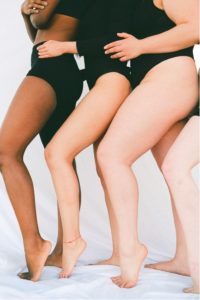 A few months later I watched the movie Embrace – You are beautiful. A wonderful film on the thin beauty ideal of our society, and alternative ways to handle this ideal. Watching this movie really moved me as I realized that I am one of many, many women, which are affected by this thin ideal. It was not, that I hadn’t known about it before, but the movie gave me a strong feeling of connectedness and thus, common humanity, to all that beautiful persons in the world dealing with the same issue.
A few months later I watched the movie Embrace – You are beautiful. A wonderful film on the thin beauty ideal of our society, and alternative ways to handle this ideal. Watching this movie really moved me as I realized that I am one of many, many women, which are affected by this thin ideal. It was not, that I hadn’t known about it before, but the movie gave me a strong feeling of connectedness and thus, common humanity, to all that beautiful persons in the world dealing with the same issue.
But this time, I brought back my uncomfortable thought to my meditation. It felt less strong and oppressive. It was possible to embrace it as a part of myself which needed time to heal, to let go. Out of the powerful feelings of common humanity, I realized, that I did not have – and even more – not wanted to be a “good” role model for eating “perfectly” consciously and  enforce some more thin-ideal internalization in my own courses, but to share my own experiences regarding these concerns with my participants – being one of them, all together on our journey to get aware of old patterns concerning our eating and bodies. It really helps – already in our preliminary talks – to discuss expectations on the outcomes of a mindful eating program and to give some suggestions in exploring such internalizations during the course. To choose freely if one would like to keep them – or wants to start the journey in letting them go.
enforce some more thin-ideal internalization in my own courses, but to share my own experiences regarding these concerns with my participants – being one of them, all together on our journey to get aware of old patterns concerning our eating and bodies. It really helps – already in our preliminary talks – to discuss expectations on the outcomes of a mindful eating program and to give some suggestions in exploring such internalizations during the course. To choose freely if one would like to keep them – or wants to start the journey in letting them go.
Do you know similar thoughts, which – in the first place – would not fit to your current attitude on your eating and/or your body? How do you handle the diet mentality and thin-ideal internalization of our society?
Diana Peitz, Germany
The post Mindful Eating, Diet Mentality, and Thin-Ideal Internalization appeared first on ME-CL.
August 10, 2020
Every meal counts and every bite has psyche
Simply taking care of each moment leading to the table, giving your attention to your experience, and taking action according to the circumstances not only will help your well being but will also help you learn to deal better with difficult situations and emotions.
Are there moments you see cooking as a chore or waste of time and moments you don’t even want to go to the kitchen? But have you thought that cooking is not just cooking! Cooking is a sensual experience and can be also a self-discovery journey. You can see cooking as an opportunity to develop new skills, to nourish and feed yourself, your family, and your friends. You can start your activity in the kitchen and over time it will probably flourish!
Cooking with curiosity
 You can begin cultivating your cooking skills by starting with something simple: just find out how you can make a nice boiled egg! And after that maybe you can try to cook a poached egg or maybe an omelet. Try new recipes and style of cooking. You will get to know something new about yourself.
You can begin cultivating your cooking skills by starting with something simple: just find out how you can make a nice boiled egg! And after that maybe you can try to cook a poached egg or maybe an omelet. Try new recipes and style of cooking. You will get to know something new about yourself.
Cooking is also a meeting with the ingredients. The ingredients of the recipe, the different kind of foods, but also the ingredients of psyche: a. the sense impressions: what we feel, see, touch, hear, smell b. volition, our inner motivators, our inner desire, c. consciousness, throughout our life, in every part of it in every action we take, in every moment we live, in every bite we taste.
Connecting through our senses
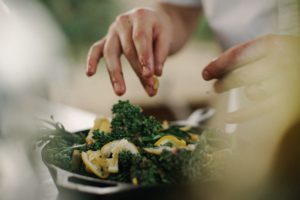 Relating with things by touching them, tending to them, you connect with them. Thus, things transformed into ingredients. Into something deeper that has a special value for us because the ingredient offers life, joy, heath, vitality, warmth, healing. The more we connect to things the more meaningful they become for us. Usually, the mind ignores what the heart is offering. So, learn to trust your felt sense. Touch with your hands: imagine that your hands have an eye in the middle of the palm that can see and connect with the object of touch. See with your eyes, smell with your nose, taste with your tongue and let your senses come and abide in your heart.Coming to your senses makes eating a whole journey and the food on the table is an open invitation for it.
Relating with things by touching them, tending to them, you connect with them. Thus, things transformed into ingredients. Into something deeper that has a special value for us because the ingredient offers life, joy, heath, vitality, warmth, healing. The more we connect to things the more meaningful they become for us. Usually, the mind ignores what the heart is offering. So, learn to trust your felt sense. Touch with your hands: imagine that your hands have an eye in the middle of the palm that can see and connect with the object of touch. See with your eyes, smell with your nose, taste with your tongue and let your senses come and abide in your heart.Coming to your senses makes eating a whole journey and the food on the table is an open invitation for it.
Eating with joy and gratitude
You can eat slowly and allow yourself to experience joy and ease. You can eat intimately and allow yourself to cultivate gratitude. To enjoy something, we need to experience it closely, to give attention to what we are eating. Food enjoyment is both nourishing and satisfying and gives you the choice to stop, when joy is no longer present. Joy creates lasting feelings of happiness and well being, where greed does the opposite. And food do tastes better when the cook is joyful.
So, where would you like to put your attention? your effort? Your heart? Your hands? What make things in life precious? What is that you really want deep in your heart?
Konstantinos Zervos, Greece
The post Every meal counts and every bite has psyche appeared first on ME-CL.
July 13, 2020
Mindful Eating – Mindful Grieving: a healing journey
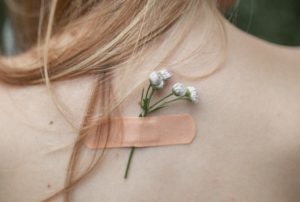 There is a certain chips brand that easily satisfies at least 7 of the 9 types of hungers we distinguish in me-cl and that I like to eat to comfort myself. Recently, it has been more than usual that that certain brand would land in my food shopping bag. Then, back at home, I would love and yield into that moment of taking one hand full after another of the crispiness into my mouth and let it all melt while chewing until it reaches my heart, pours its unconditional comfort into me and sticks a band aid onto the aching parts of my being.
There is a certain chips brand that easily satisfies at least 7 of the 9 types of hungers we distinguish in me-cl and that I like to eat to comfort myself. Recently, it has been more than usual that that certain brand would land in my food shopping bag. Then, back at home, I would love and yield into that moment of taking one hand full after another of the crispiness into my mouth and let it all melt while chewing until it reaches my heart, pours its unconditional comfort into me and sticks a band aid onto the aching parts of my being.
– At least for some moments.
Because, you know, this is not only about chips but also about grief – and I am not speaking about the griefs coming with illness or death. I speak about simple daily life moments of sadness or that moment waking up and realizing that life was, is and will always be different than I want or can ever imagine – something I ‘knew’. And somehow it seems that I didn’t.
They came with one big moment into my awareness, all those disappointments with myself, with life, my partner, our relationship. And they set off an intense and long series of deep grief moving my life for a while, moments I had to put away the bowl with chips while my sobbing grew stronger and louder and I knew I have to take care of myself differently.
A beautiful moment I find: Something in me grows so strong that I don’t know any better than to surrender. Everything that was before – thoughts of how this is alarming, questions of whether it’s still alright, whether I am depressed, how to fix it, wanting it to go away, trying to shortcut or bypass the process, all the obvious and subconscious taking control of what I experience in order to protect myself from the actual pain – all that falls away when I allow myself to surrender. And it is only then that I start moving towards true acceptance. Acceptance that comes with grounding myself into trust in a bigger intelligence than I am, an intelligence that brings healing when grief is allowed to move undisturbed.
 Grief does have its own life. And I can choose to “be with” it or not. I can choose to be a vessel for the movements grief unfolds, accompanying them on their passage. Will I hold on to them – identify? I’ll get stuck. Will I ignore them – neglect? I won’t truly arrive. But if I stay present and with I can find where I came from, what to let go, what comes along with the transition and where I want to settle next. Because to me, grief is a transition, like the sacred pause between in and outbreath or that moment when I walk step by step, taking my foot off the ground. It is that moment of being nowhere and everywhere at the same time, touching the fullness of a life deeply letting go and by that holding all potential, all possibilities, just before finding new ground and setting the foot into new stability, a new place to move from.
Grief does have its own life. And I can choose to “be with” it or not. I can choose to be a vessel for the movements grief unfolds, accompanying them on their passage. Will I hold on to them – identify? I’ll get stuck. Will I ignore them – neglect? I won’t truly arrive. But if I stay present and with I can find where I came from, what to let go, what comes along with the transition and where I want to settle next. Because to me, grief is a transition, like the sacred pause between in and outbreath or that moment when I walk step by step, taking my foot off the ground. It is that moment of being nowhere and everywhere at the same time, touching the fullness of a life deeply letting go and by that holding all potential, all possibilities, just before finding new ground and setting the foot into new stability, a new place to move from.
Isn’t that beautiful? Grieving mindfully, I find the healing seeds and the fruits, all at once. Being with grief instead of against or sticking to it eventually and organically brings me joy, peace and a deep love for being. And I find that there is a huge loss in what I believe to be socio-cultural exiling of grief into the hidden, private spaces of aloneness. And that’s why I’m writing about it, writing about its beauty.
And also, I’m curious:
 How do you relate to grief in your own life personally and in your environment?
How do you relate to grief in your own life personally and in your environment?
Is grief for you, as it is for me, maybe also part of your own healing journey?
May we honor more the tenderness of our hearts. It is that tenderness that opens the lotus.
Ewgenia Roth, Germany
Photo credits: ttps://unsplash.com/photos/Yp_tSUrm8T4 ;https://unsplash.com/photos/IKEwHKKIzog; https://unsplash.com/photos/zoJgYWHOYaw
The post Mindful Eating – Mindful Grieving: a healing journey appeared first on ME-CL.
June 8, 2020
Fear & Freedom: How do my values impact my life?
Fear has been a sentiment I dealt with through confinement. The sudden state of emergency, the fast-rising numbers of people affected and dying, the chaos in all hospitals, and the lack of leadership from the government created a deep sense of insecurity that I have never felt before.

when our emotions get out of control imprison us
This led me to seclude myself even more from the world, disconnecting from social media accounts and limiting my contact to few very close friends and family.
Despite every cell of my body asking for this, taking that decision was tough. It meant giving up the idealized image of who I am supposed to be and accepting who I am. It was a very interesting exercise. Was courage one of my values as I always thought? Was I actively contributing to the world when the world most needed it? Was I helping alleviate the suffering from others as I always told myself I should do?
Well, initially it felt I was not. And it felt disappointing.
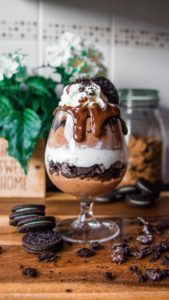
What is the real need under the craving?
To deal with my disappointment I decided to further deepen into the study of my values. Were the values I always thought defined me really mine or inherited from my family and society. I read a few books, watched some videos (mind hunger) and wrote a lot in my diary (heart hunger).
This led me to embark on a very enlightening exercise which helped me paint in different colours a few days during confinement. I listed thes values that I always believed were part of my invisible driving force and I set the intention for each day to live the day through the lenses of one value. Observing and experiencing how the day would change.
What an interesting perspective! I found that many decisions changed the outcome completely when taken through the perspective of the different values. Sometimes challenging me to do things in a different way. Sometimes challenging me to involve all my senses to be present despite the lack of willingness to do it. Many times truly questioning myself the real reason behind what I was doing. It brought me straight into the present moment. And away from fear.
One of the areas that was most influenced by this exercise was dealing with food and the cravings that I had experienced in the confinement. Facing the craving holding the value of freedom, for example, changed the experience completely. Sometimes neutralizing the craving and creating a beautiful space to listen and nurture the real need underneath the urge to eat. It created a whole new reality.
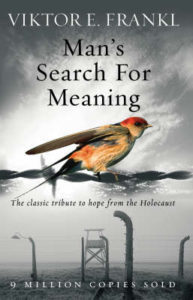 This is beautifully described in Viktor Frankl’s book, The man in search of meaning.
This is beautifully described in Viktor Frankl’s book, The man in search of meaning.
“Between stimulus and response there is a space. In that space is our power to choose our response. In our response lies our growth and our freedom.”
What are your personal core values? How would your day be shaped when lived through the lenses of your values?
Cuca Azinovic – Spain
The post Fear & Freedom: How do my values impact my life? appeared first on ME-CL.
MIEDO & LIBERTAD – Las dos caras de la misma moneda
El miedo es un sentimiento que me ha acompañado durante el confinamiento. La situación de emergencia repentina, el siempre creciente número de personas afectadas y muertes, el caos en los hospitales y la falta de liderazgo del gobierno ha creado un profundo sentimiento de inseguridad que no había sentido nunca antes.

Esto me llevó a un aislamiento casi total del mundo desconectando completamente de las redes sociales y limitando mis contactos estrictamente a familia y amigos muy íntimos.
Aunque todas las células de mi cuerpo me pedían esto, no fue fácil tomar esta decisión, ya que significó abandonar la imagen idealizada de quien debía ser para aceptar quien realmente soy. En cambio, si fue un ejercicio muy interesante. ¿Era el coraje uno de mis valores centrales como siempre había creído? ¿Estaba contribuyendo al mundo cuando el mundo más lo necesitaba? ¿Estaba ayudando a aliviar el sufrimiento de otros como siempre me había dicho a mí misma que tenía que hacer?
Pues bien, inicialmente sentí que no estaba haciendo nada de esto. Y sentí decepción.

Para lidiar con mi decepción decidí profundizar en el estudio de mis valores. Los valores que siempre había creído que me definían ¿eran míos verdaderamente o heredados de familia y sociedad? Empecé a leer algunos libros, vi algunos videos (hambre mental) y escribí mucho en mi diario de meditación (hambre de corazón).
Esto me llevó a embarcarme en un ejercicio muy esclarecedor que me ayudó a pintar en diferentes colores unos días durante el confinamiento. Se trataba de listar los valores que siempre creí que eran parte de mi invisible fuerza interior y establecer la intención de cada día de vivir el día a través de las lentes de un valor. Observando y experimentando cómo cambiaría el día.
¡Qué perspectiva tan interesante! Descubrí que muchas decisiones cambiaron el resultado por completo cuando se tomaron desde la perspectiva de los diferentes valores. A veces retándome a hacer las cosas de manera diferente. A veces invitándome a involucrar a todos mis sentidos para estar presente a pesar de la desgana. Y muchas veces haciéndome reflexionar sobre la verdadera razón que estaba detrás de lo que estaba haciendo. En otras palabras, este ejercicio me trajo directamente al momento presente. Y lejos del miedo.
Una de las áreas que estuvo más influenciada por este ejercicio fue en el aspecto de la comida y la ansiedad por comer que he sentido en algunos momentos durante el confinamiento. Vivir esta ansiedad desde el valor de la libertad, por ejemplo, cambió la experiencia por completo. Neutralizando a veces el deseo y a veces creando un hermoso espacio para la escucha interna y nutrir la verdadera necesidad detrás de la ansiedad por ese alimento. Creando una realidad completamente nueva.
 PICTURE VF BOOK Esto lo describe maravillosamente Viktor Frankl en su libro titulado El hombre en busca de sentido. “Entre el estímulo y la respuesta hay un espacio. En ese espacio está nuestro poder para elegir nuestra respuesta. En nuestra respuesta yace nuestro crecimiento y nuestra libertad”.
PICTURE VF BOOK Esto lo describe maravillosamente Viktor Frankl en su libro titulado El hombre en busca de sentido. “Entre el estímulo y la respuesta hay un espacio. En ese espacio está nuestro poder para elegir nuestra respuesta. En nuestra respuesta yace nuestro crecimiento y nuestra libertad”.
¿Cuáles son tus valores centrales personales? ¿Qué forma tomaría tu día si lo vivieras a través de la lente de alguno de tus valores?
Cuca Azinovic – Spain
The post MIEDO & LIBERTAD – Las dos caras de la misma moneda appeared first on ME-CL.
May 6, 2020
Mangez-vous plus rapidement pour mettre fin plus vite au confinement ? Ralentissez !
Au mois de mars en Italie, le confinement avait commencé depuis 1 semaine.
En France, l’annonce d’un discours du président a soudainement provoqué une ruée vers les magasins d’alimentation. Pâte, riz et autres produits de base ont été dévalisé malgré les messages rassurants des autorités politiques. Et le papier toilette ! ??
Avez-vous observé chez vous cette peur de manquer qui pousse à faire des réserves ?
 J’ai du faire de grands efforts pour raisonner mon « monkey mind » et n’acheter que ce dont j’avais raisonnablement besoin.
J’ai du faire de grands efforts pour raisonner mon « monkey mind » et n’acheter que ce dont j’avais raisonnablement besoin.
Puis une certaine routine s’est installée.
Chaque famille a cherché le meilleur rythme selon l’âge des enfants. Certains maintiennent tous les repas ensemble, d’autres ne le font que le soir. Chez d’autres on cuisine à tour de rôle. Certaines personnes partagées entre l’envie de se nourrir de manière saine et le manque d’envie de cuisiner, ne prennent qu’un repas par jour.
Cuisiner m’occupe, j’oublie tout le reste. J’observe que je suis très créative, nous n’avons jamais mangé deux fois la même chose. Insidieusement, j’ai fait de la cuisine mon territoire, ne « permettant » à mon mari et son fils d’y être que pour faire la vaisselle !

Dans les magasins, la quantité de farine vendue a été multipliée par 5 ! Gâteaux et crêpes occupent et nourrissent les enfants dans la joie et à faible coût.
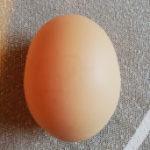 L’autre champion des ventes actuellement en France c ‘est l’œuf ! Facile à faire, avec multiples recettes et économiques, ils sont une réponse aux repas du midi qui étaient habituellement pris à la cantine ou aux restaurants.
L’autre champion des ventes actuellement en France c ‘est l’œuf ! Facile à faire, avec multiples recettes et économiques, ils sont une réponse aux repas du midi qui étaient habituellement pris à la cantine ou aux restaurants.
J’apprécie tout particulièrement les œufs pochés, et ma technique s’est bien améliorée.
Avez-vous déjà mangé un Soufflé aux brocolis ?
Les queues d’attente devant les magasins bons marchés sont devenues interminables, les réseaux de solidarité dans les quartiers populaires font face à des demandes grandissantes de semaines en semaines.
Des spots avec des conseils pour cuisiner en toute sécurité par rapport à l’épidémie sont apparus à la télévision. https://www.facebook.com/watch/?v=2726381524312797
Les personnes souffrant de TCA sont largement invitées à rester en contact avec leur thérapeute.
Après avoir constaté les pénuries de masques et de médicaments produits à l’étranger, l’autosuffisance alimentaire en France soulèvent les débats. Tous ceux qui le peuvent font un potager, discrètement encouragés par l’état.

Pourvu que cette crise soit l’opportunité de développer massivement une agriculture responsable.
https://www.arte.tv/fr/videos/086137-000-A/manger-autrement-l-experimentation/?fbclid=IwAR0tec_5QegSReruhJ4V5yqHwLXl2gxAIN5vM975XkTqt8Rr4wZtYmaEv3E (Manger différemment un documentaire sous titré en français ou en allemand.)
 La prise de poids est quasi générale, tous parlent de leurs 1, 2 ou 3 kilos de plus.
La prise de poids est quasi générale, tous parlent de leurs 1, 2 ou 3 kilos de plus.
En effet, je me sens plus serrée dans mon jean, (et il ne sort pas de la machine à laverJ) . Une part de moi mécontente me dit de réduire mon alimentation, le chocolat et autres douceurs … Une autre part me rappelle que la contrainte du confinement est déjà assez difficile à gérer, que mon poids se régulera plus tard quand j’aurai repris mes activités qui laissent moins de place et de temps aux pensées de nourriture.
Alors ne rien faire ??
Et la sagesse du corps qui me dit, avec douceur et fermeté, RALENTI,
Juste RALENTIR
Juste comme Zingal Segal nous le propose « Slow Down You Move Too Fast, …Yes, But How? » https://www.facebook.com/watch/?v=540519396609354
En effet, je mange plus rapidement qu’habituellement, comme si ça pouvait faire avancer la fin du confinement plus vite.
Et vous, qu’en pensez-vous ?
 Géraldine Desindes, France
Géraldine Desindes, France
The post Mangez-vous plus rapidement pour mettre fin plus vite au confinement ? Ralentissez ! appeared first on ME-CL.
Are you eating faster to end the Lockdown? Slow down!
By March in Italy, containment had been in operation for a week.
In France, the announcement of a speech by the president suddenly provoked a rush to food stores. Pasta, rice and other basic products have been stormed despite the reassuring messages from the political authorities. And toilet paper!?
Have you observed this fear of missing out that makes you want to stock up?
I had to make great efforts to reason my “monkey mind” and buy only what I reasonably needed.

Then a certain routine set in.
Each family looked for the best rhythm according to the age of the children. Some keep all the meals together, others only do it in the evening. Others take turns cooking. Some people, torn between the desire to eat healthy food and the lack of desire to cook, eat only one meal a day.
Cooking keeps me busy, I forget about everything else. I observe that I am very creative, we have never eaten the same thing twice. Insidiously, I have made cooking my “territory”, “allowing” my husband and his son to be there only to do the dishes!

In the stores, the quantity of flour sold was multiplied by 5! Cakes and “crêpes” occupy and feed the children with joy and at low cost.
 The other sales champion currently in France is the egg! Easy to make, multiple recipes and economical, they are an answer to the lunch meals that were usually taken at the canteen or in restaurants,
The other sales champion currently in France is the egg! Easy to make, multiple recipes and economical, they are an answer to the lunch meals that were usually taken at the canteen or in restaurants,
I especially like poached eggs, and my technique has improved a lot.
Did you ever eat “ un soufflé au broccoli” ?
The queues in front of cheap shops have become interminable, solidarity networks in working-class neighborhoods are facing increasing demands from week to week.
Videos with advice how to cook safely broadcast on television. https://www.facebook.com/watch/?v=2726381524312797
People suffering from eating disorder are widely encouraged to stay in touch with their therapist.
After noting the shortages of masks and medicines produced abroad; food self-sufficiency in France is a matter of debate. Anyone who can, do a vegetable garden, discreetly encouraged by the state.

Let’s hope that this crisis is an opportunity to massively develop responsible agriculture.
https://www.arte.tv/fr/videos/086137-000-A/manger-autrement-l-experimentation/?fbclid=IwAR0tec_5QegSReruhJ4V5yqHwLXl2gxAIN5vM975XkTqt8Rr4wZtYmaEv3E (eat differently – a documentary in French or German)
 The weight gain is almost general, everyone talks about their 1.2 or 3 kilos more. Indeed, I feel tighter in my jeans, (and it didn’t come out of the washing machine
The weight gain is almost general, everyone talks about their 1.2 or 3 kilos more. Indeed, I feel tighter in my jeans, (and it didn’t come out of the washing machine  ). One part of me is unhappy and tells me to reduce food, chocolate and other sweets… Another part reminds me that the constraint of confinement is already quite difficult to manage. My weight will regulate itself later; when I will have resumed my activities that leave less time and space for thoughts of food. So should I do nothing??
). One part of me is unhappy and tells me to reduce food, chocolate and other sweets… Another part reminds me that the constraint of confinement is already quite difficult to manage. My weight will regulate itself later; when I will have resumed my activities that leave less time and space for thoughts of food. So should I do nothing??
And the wisdom of the body telling me, gently and firmly, SLOWING DOWN. Just SLOWER.
Just like Zindel Segal propose us « Slow Down You Move Too Fast, …Yes, But How? » https://www.facebook.com/watch/?v=540519396609354
Indeed, I’m eating faster than usual, as if that would make the end of the lockdown go faster.
What do you think?
 Géraldine Desindes, France
Géraldine Desindes, France
The post Are you eating faster to end the Lockdown? Slow down! appeared first on ME-CL.
April 13, 2020
“The Pause Button”: My New Normal
 With all of the anxiety, fear and suffering surrounding these uncertain times of the novel coronavirus (COVID-19), recently I was swept up in the chaos at the local grocery store. As a health and wellness nurse and educator who is married to an Emergency Medicine physician, I am acutely aware of the statistics, risks, and emergency preparedness protocols. However, I am human and when I saw two mothers with their grocery carts filled with paper products, frozen foods, bottles of water, and canned goods, I began filling my cart with items I didn’t have on my grocery list and that my family and I don’t eat very often.
With all of the anxiety, fear and suffering surrounding these uncertain times of the novel coronavirus (COVID-19), recently I was swept up in the chaos at the local grocery store. As a health and wellness nurse and educator who is married to an Emergency Medicine physician, I am acutely aware of the statistics, risks, and emergency preparedness protocols. However, I am human and when I saw two mothers with their grocery carts filled with paper products, frozen foods, bottles of water, and canned goods, I began filling my cart with items I didn’t have on my grocery list and that my family and I don’t eat very often.
What is that about?
“In psychology, the spread of emotion from one person to another is aptly termed social contagion.” In ME-CL we understand there is “scarcity mind” – a fear of lacking something or not having enough that is initiated from our own thoughts. My survival mode turned on scarcity mind and social contagion took over and I lost my perspective in those moments.
This “social contagion” is evidenced in so many areas of our lives as we interact with one another, and particularly, through the news and social media. It can happen even teaching the Mindful Eating – Conscious LivingProgram. I remember teaching the exercise around conditioned patterns of eating with our family during class 4. During inquiry, one participant began to speak with intense emotion about the difficult relationship she had with her mother throughout her life. Quickly, the strong emotions she was describing began to spread to the other participants who started sharing their relationships with difficult family members. The emotions in the room spread like a wildfire.
Interrupting social contagion
Initially, I sat paralyzed watching the group dialogue guidelines disintegrate as people were talking over one another. But within minutes I employed a strategy born out of this vital practice of mindfulness. I have named this strategy, “the pause button.” The pause button is a practice of equanimity. Equanimity is defined as “mental or emotional stability or composure, especially under tension or strain; calmness; equilibrium.”
“We are going to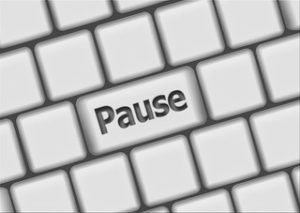 press the pause button and check-in,” I calmly and firmly said. It was important to pause both for myself and my participants, to come back to the present and take a moment to assess the thoughts, emotions and physical sensations. This created space for stability and equilibrium.
press the pause button and check-in,” I calmly and firmly said. It was important to pause both for myself and my participants, to come back to the present and take a moment to assess the thoughts, emotions and physical sensations. This created space for stability and equilibrium.
Pausing for our family’s sake
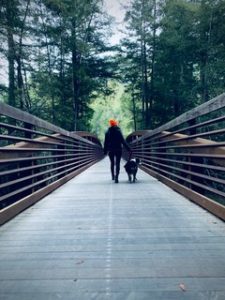 As a global family we are having our collective “pause button” as we address the reality of this health crisis. We are staying six feet apart, self-quarantining, and sheltering in our homes. This disruption poses a unique opportunity to stop and recognize how we might live with greater awareness, balance, clarity, and simplicity as we proceed. Perhaps from this a greater sense of gratitude, generosity, and well-being will grow for ourselves, those in healthcare, those afflicted, and anyone helping to support humanity.
As a global family we are having our collective “pause button” as we address the reality of this health crisis. We are staying six feet apart, self-quarantining, and sheltering in our homes. This disruption poses a unique opportunity to stop and recognize how we might live with greater awareness, balance, clarity, and simplicity as we proceed. Perhaps from this a greater sense of gratitude, generosity, and well-being will grow for ourselves, those in healthcare, those afflicted, and anyone helping to support humanity.
Jan Chozen Bays once told me that “sometimes the best thing to do is nothing.” This wise advice is so relevant as we navigate the new normal of our lives. As human beings, we are so eager to fix, solve and do things. Yet, now more than ever, is the time to rest, recalibrate, and pause.
If we are staying home, keeping our distance, protecting one another, can we press “the pause button” and witness what is here right now with the intention of cultivating equanimity?
What do you notice when you shift the focus to present moment activities like playing a game with your family members, going outside and walking in nature, spending time with a beloved pet, connecting with loved ones through technology?
Lisa Rigau, USA
Brewer, J.A., ‘A Brain Hack to Break the Coronavirus Anxiety Cycle’, New York Times, 2020, https://www.nytimes.com/2020/03/13/well/mind/a-brain-hack-to-break-the-coronavirus-anxiety-cycle, (accessed March 14, 2020).
Dictionary.com [website], https://www.dictionary.com/browse/equanimity, (accessed March 15, 2020).
The post “The Pause Button”: My New Normal appeared first on ME-CL.
March 9, 2020
Lessons from the field: Our shared humanity makes the difference
The more I recognize my suffering, the better I understand the suffering of others. I see our shared humanity and that makes all the difference in the world. This was not always clear to me.
A crisis with a client a few years ago gifted me with some insight. The woman struggled with body image and tried, at great length, to punish her body — she had been abusing laxatives to control her weight — if it didn’t conform to her ideas of beauty or acceptability. As a result of the harshness with which she was treating her body, she was hospitalized with a depletion of electrolytes. She suffered a severe dysregulation of potassium and sodium. Her purging behaviors had escalated together with excessive exercise, and as a consequence her body broke down.
 In session, the woman was remorseful, fully conscious of what she had done to her body. My first reaction surged in, a familiar tendency: I judged her for not controlling her impulses. Next, a part of me felt like her crisis was my failure, and I blamed her in my head. A part of me felt like a bad therapist, like her failure was evidence of my incompetence. I felt in deficit and almost simultaneously I felt shame. I struggle with my inner critic when I don’t feel up to par. I was doing it with her. Was my inner critic barking up the wrong tree?
In session, the woman was remorseful, fully conscious of what she had done to her body. My first reaction surged in, a familiar tendency: I judged her for not controlling her impulses. Next, a part of me felt like her crisis was my failure, and I blamed her in my head. A part of me felt like a bad therapist, like her failure was evidence of my incompetence. I felt in deficit and almost simultaneously I felt shame. I struggle with my inner critic when I don’t feel up to par. I was doing it with her. Was my inner critic barking up the wrong tree?
The first Noble Truth of Buddhism teaches us that dukkha, suffering, is an unavoidable part of life and it comes from our attachments and desires. Is shame a form of unnecessary suffering? I certainly felt like the little hamster whirling dizzily in the wheel of shame. The more I felt it, the more I tried avoiding it, the deeper I sank into shame.
It was not until today, as I was preparing to give a lecture that I became clear about what was behind my judgments toward the woman whose electrolyte got depleted. It was obvious to me as I was rushing to the pantry to grab a bag of dried fruit. I stopped to ask myself, “What is really hungry in me?” as I realized my last meal had barely hit my stomach and I was already on a scavenger hunt. I heard a loud, old voice saying, “You are not good enough, prepared enough, smart enough” and so on. When I checked in with my stomach, I felt it was full. It was not stomach hunger that was taking me to the pantry. I was confusing shame with stomach hunger. The inner critic was shaming me. I was invited to lecture because my colleague trusted in my abilities, yet I was consumed by doubts. Where on earth do we ever find so much energy for self-criticism?
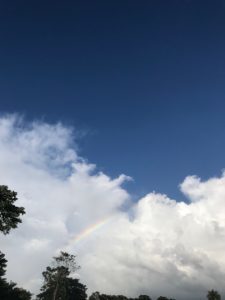 Here I am, willing to take the lesson my conditioned thinking has generated and use it as fuel for my own growth. I want my life to be about alleviating unnecessary suffering while grasping our common humanity at its fullest. When I recognize my suffering, I see the suffering of others more clearly. By recognizing my own flaws, my own unskillfulness, I begin to stand more balanced at the threshold of the life I want to create.
Here I am, willing to take the lesson my conditioned thinking has generated and use it as fuel for my own growth. I want my life to be about alleviating unnecessary suffering while grasping our common humanity at its fullest. When I recognize my suffering, I see the suffering of others more clearly. By recognizing my own flaws, my own unskillfulness, I begin to stand more balanced at the threshold of the life I want to create.
Is this way of relating to others one that can keep us humble, inspired and reaching for growth?
Marianela Medrano, US
The post Lessons from the field: Our shared humanity makes the difference appeared first on ME-CL.
February 10, 2020
Gratitude Practice: a way to feed your mind nourishing food
Wouldn’t you like to be healthier and happier? Research shows that actively practicing gratitude can have many positive effects. The 8-week Mindful Eating-Conscious Living (ME-CL) program includes exercises that cultivate gratitude: Gratitude for the Body, and Looking Deeply Into Your Food. These are exercises that participants enjoy and often continue after finishing the program.
Our blogs are almost al ways focused on the “mindful eating” half of ME-CL. I would like to focus on the “conscious living” aspect. If you have watched your mind in meditation you may have noticed the mind’s tendency to focus on the negative. What do I mean by “negative”? Thoughts that cause stress. You can watch your mind returning again and again to particular worries (Finances? Politics? Loved ones?), to the mistakes we made in the past, and to the possibility of future diseases or disasters.
ways focused on the “mindful eating” half of ME-CL. I would like to focus on the “conscious living” aspect. If you have watched your mind in meditation you may have noticed the mind’s tendency to focus on the negative. What do I mean by “negative”? Thoughts that cause stress. You can watch your mind returning again and again to particular worries (Finances? Politics? Loved ones?), to the mistakes we made in the past, and to the possibility of future diseases or disasters.
Why does the mind do this?
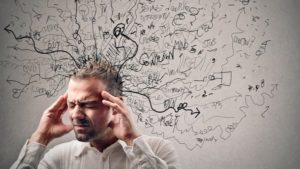 The mind does this because it believes that its job is thinking, and that thinking a lot will protect us against difficulties, especially the greatest difficulty, death. A glance at newspaper headlines will show you want our mind is interested in. As I write, they include predictions of a worldwide epidemic beginning in China, the partisan fight over impeachment in the US Congress, a helicopter crash that killed a basketball star and his teenaged daughter, the recall of hundreds of thousands of infant sleeping beds because of cases of suffocation.
The mind does this because it believes that its job is thinking, and that thinking a lot will protect us against difficulties, especially the greatest difficulty, death. A glance at newspaper headlines will show you want our mind is interested in. As I write, they include predictions of a worldwide epidemic beginning in China, the partisan fight over impeachment in the US Congress, a helicopter crash that killed a basketball star and his teenaged daughter, the recall of hundreds of thousands of infant sleeping beds because of cases of suffocation.
When our mind’s diet is fear, we cannot not thrive.
We need to fee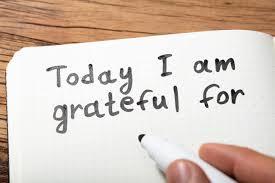 d our mind nourishing food. Gratitude is extremely nourishing – the research showing this is quite robust. When people spend just a few minutes every day for ten weeks writing down things they are grateful for, they experience benefits in their heart and mind (increased sense of well-being, increased optimism, increased satisfaction with life) and even in their body (fewer doctor visits, more exercise).
d our mind nourishing food. Gratitude is extremely nourishing – the research showing this is quite robust. When people spend just a few minutes every day for ten weeks writing down things they are grateful for, they experience benefits in their heart and mind (increased sense of well-being, increased optimism, increased satisfaction with life) and even in their body (fewer doctor visits, more exercise).
What is an example of a gratitude practice?
 A long-lasting positive effect was seen in people who wrote a single thank you letter to someone in their life who had not been adequately thanked for their kindness, and delivered it in person. The positive effects of gratitude practice were also seen in people with chronic illness, and in relationships.
A long-lasting positive effect was seen in people who wrote a single thank you letter to someone in their life who had not been adequately thanked for their kindness, and delivered it in person. The positive effects of gratitude practice were also seen in people with chronic illness, and in relationships.
Gratitude practice is a non-pharmaceutical way to improve mood, well being and physical health. It is a remedy for stress and anxiety that has only positive side effects.
Would you like to try gratitude practice? Each night, before bed, spend a few minutes sitting or lying quietly and bringing to mind at least five things that you are grateful for.
Do you notice any changes in your body, mind or heart when you do gratitude practice?
Jan Chozen Bays, USA
Reference:
The Harvard Mental Health Letter (6/5/19) https://www.health.harvard.edu/mind-and-mood/in-praise-of-gratitude
The post Gratitude Practice: a way to feed your mind nourishing food appeared first on ME-CL.
Jan Chozen Bays's Blog
- Jan Chozen Bays's profile
- 51 followers



